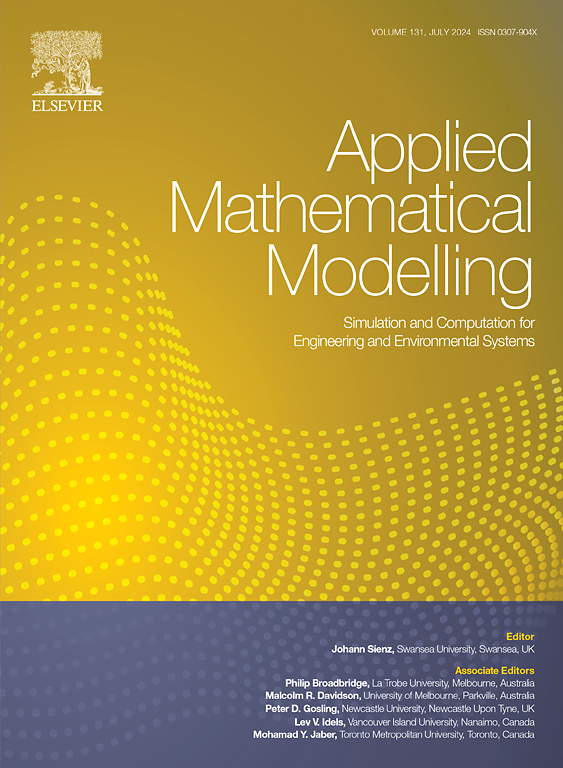一维六方准晶体中裂纹平面平行于准周期方向的新型i型椭圆裂纹问题
IF 4.4
2区 工程技术
Q1 ENGINEERING, MULTIDISCIPLINARY
引用次数: 0
摘要
本文研究了一维(1-D)六方准晶体(QCs)中的非传统椭圆裂纹问题。裂纹表面平行于qc的准周期轴,并承受一对均匀法向载荷。首先考虑一个单位点位错问题,利用势理论方法推导了任意形状平面裂纹问题的控制方程。裂纹问题的声子-相耦合场用简单积分表示。得到了裂纹表面位移(CSD)和应力强度因子(SIF)等关键断裂参数。对解析解进行了验证,并研究了偏心率、相场、裂纹取向和材料常数对CSD和SIF的影响。本文的研究结果为一维六角形qc的断裂机理提供了新的见解,同时也为qc的设计、优化和制造提供了理论基础。本文章由计算机程序翻译,如有差异,请以英文原文为准。
A novel mode-I elliptic crack problem in one-dimensional hexagonal quasicrystals with the crack plane parallel to the quasi-periodic direction
This article studies a non-traditional elliptic crack problem in one-dimensional (1-D) hexagonal quasicrystals (QCs). The crack surface is parallel to the quasi-periodic axis of QCs and is subjected to a pair of uniform normal loadings. A unit point dislocation problem is considered first to derive the governing equation for the crack problem with an arbitrarily shaped planar crack, based on the potential theory method. The phonon-phason coupling field of the crack problem is expressed by simple integrals. The key fracture parameters, including the crack surface displacement (CSD) and stress intensity factor (SIF) are obtained. The analytical solutions are validated and the effects of eccentricity, phason field, crack orientation and material constants on the CSD and SIF are investigated. The results presented in this paper offer insights into the fracture mechanism of 1-D hexagonal QCs, while also providing a theoretical foundation for the design, optimization, and manufacture of QCs.
求助全文
通过发布文献求助,成功后即可免费获取论文全文。
去求助
来源期刊

Applied Mathematical Modelling
数学-工程:综合
CiteScore
9.80
自引率
8.00%
发文量
508
审稿时长
43 days
期刊介绍:
Applied Mathematical Modelling focuses on research related to the mathematical modelling of engineering and environmental processes, manufacturing, and industrial systems. A significant emerging area of research activity involves multiphysics processes, and contributions in this area are particularly encouraged.
This influential publication covers a wide spectrum of subjects including heat transfer, fluid mechanics, CFD, and transport phenomena; solid mechanics and mechanics of metals; electromagnets and MHD; reliability modelling and system optimization; finite volume, finite element, and boundary element procedures; modelling of inventory, industrial, manufacturing and logistics systems for viable decision making; civil engineering systems and structures; mineral and energy resources; relevant software engineering issues associated with CAD and CAE; and materials and metallurgical engineering.
Applied Mathematical Modelling is primarily interested in papers developing increased insights into real-world problems through novel mathematical modelling, novel applications or a combination of these. Papers employing existing numerical techniques must demonstrate sufficient novelty in the solution of practical problems. Papers on fuzzy logic in decision-making or purely financial mathematics are normally not considered. Research on fractional differential equations, bifurcation, and numerical methods needs to include practical examples. Population dynamics must solve realistic scenarios. Papers in the area of logistics and business modelling should demonstrate meaningful managerial insight. Submissions with no real-world application will not be considered.
 求助内容:
求助内容: 应助结果提醒方式:
应助结果提醒方式:


